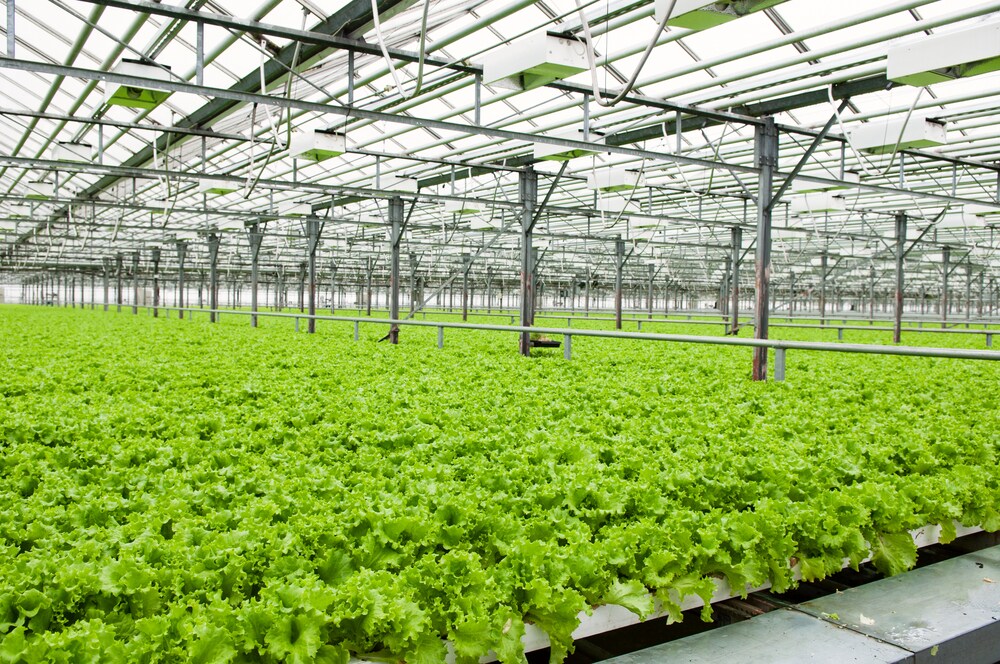 With the current attention on risk factors for foodborne illness, farms are quite rightly under scrutiny for implementing good agricultural practices (GAPs) with regard to minimizing or eradicating contamination during crop production. Holvoet et al. (2014) examined risk factors for microbial contamination in lettuce crops under open field or greenhouse growing systems1. Since fresh leafy greens have been identified as specific risk products for foodborne disease transmission, the researchers wanted to find out if the cultivation system influenced contamination.
With the current attention on risk factors for foodborne illness, farms are quite rightly under scrutiny for implementing good agricultural practices (GAPs) with regard to minimizing or eradicating contamination during crop production. Holvoet et al. (2014) examined risk factors for microbial contamination in lettuce crops under open field or greenhouse growing systems1. Since fresh leafy greens have been identified as specific risk products for foodborne disease transmission, the researchers wanted to find out if the cultivation system influenced contamination.
Holvoet et al. wondered if the enclosed nature of greenhouse lettuce production might minimize fecal contamination, since the crop grows in a more controlled environment. In order to examine this theory, the team focused on Escherichia coli as an indicator of fecal contamination. Although both production systems are vulnerable to direct and indirect contamination pre- and post-harvest (through contact with humans, manure, composts, fertilizers, and water used on and around the farm) crops grown in open field systems are more accessible to animals and birds. Furthermore, both climate and topology affect open fields more than greenhouse operations.
Using interviews, self-reporting and site visits, Holvoet et al. surveyed open field producers (n=4) and greenhouse (n=4) butterhead lettuce farms in the West Flanders area of Belgium, following a full cropping cycle between April 2011 and December 2012. Consumers buy butterhead lettuce supplied from these farms as the whole vegetable or as bagged pre-cut produce.
Farmers completed questionnaires, assessing themselves on implementation of GAPs in addition to giving information about the farm. During site visits, the researchers took samples for microbial analysis from seedlings and potting soil, crops pre- and post-harvest, water sources and distribution systems, and soil in the cultivation areas. They used polymerase chain reaction (PCR) as a screening tool to detect E. coli in addition to Salmonella, Campylobacter and other indicator species. They confirmed PCR positives with standard microbial culture.
Even though the researchers found high levels of E. coli in the seedling potting soil at each type of farm, lettuce from the open field system had higher levels of contamination in the crop itself (99% samples from greenhouses showed undetectable levels of E. coli versus 90% in open field samples). This increased during summer when irrigation increased the pathogen risk. Indeed, tests showed that the water was the most probable route for fecal contamination in both cultivation systems. Farms using inorganic manure and fertilizers did not show any difference in E. coli prevalence.
Comparing water sources and management, the team noted variation in methods used to protect the supply; greenhouse operations used borehole or reservoir rainfall, relying on water treatment programs, whereas all open field farms used rainwater without treatment. Furthermore, only greenhouse farms using collected rainwater ensured that structural modifications (elevation) protected the reservoir collection basins from run off. Water samples taken from open field farms were more likely to show pathogen (Campylobacter and Salmonella species) contamination. Overall, greenhouse systems implemented more control measures to ensure a safe water supply for growing and harvesting activities. Borehole water tended to be less contaminated with microbes than open well water.
Holvoet et al. noted that there is no European Union (EU)-wide microbial monitoring plan in place, since consumers seem to be more concerned about chemical levels in food than about microbes. Since water is an important risk factor in contamination of open field crops, the researchers suggest developing guidelines for monitoring its quality and microbial load, in addition to implementing specific GAPs to ensure protection of supply.
For further discussion on the use of PCR for food safety testing in fresh produce read: Pallet to Palate: Extending Shelf Life and Safety in Microgreens with PCR
You may also find this recent article of interest: Strategies to Combat Microbial Hazards Associated with Fresh Produce
Reference
1. Holvoet, K. et al. (2015) “Agricultural and Management Practices and Bacterial Contamination in Greenhouse versus Open Field Lettuce Production“, International Journal of Environmental Research and Public Health 12 (pp.32-63) doi:10.3390/ijerph120100032


Leave a Reply